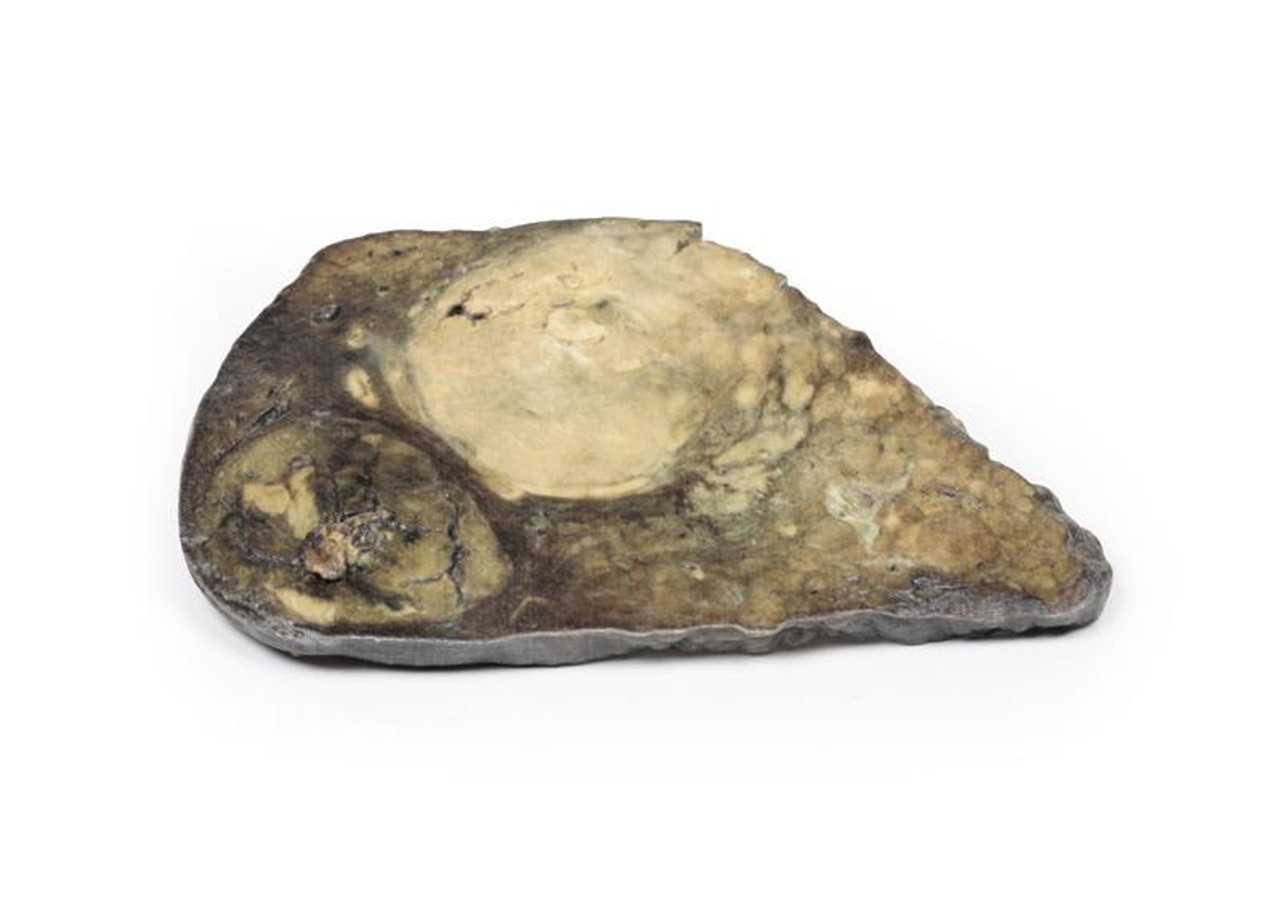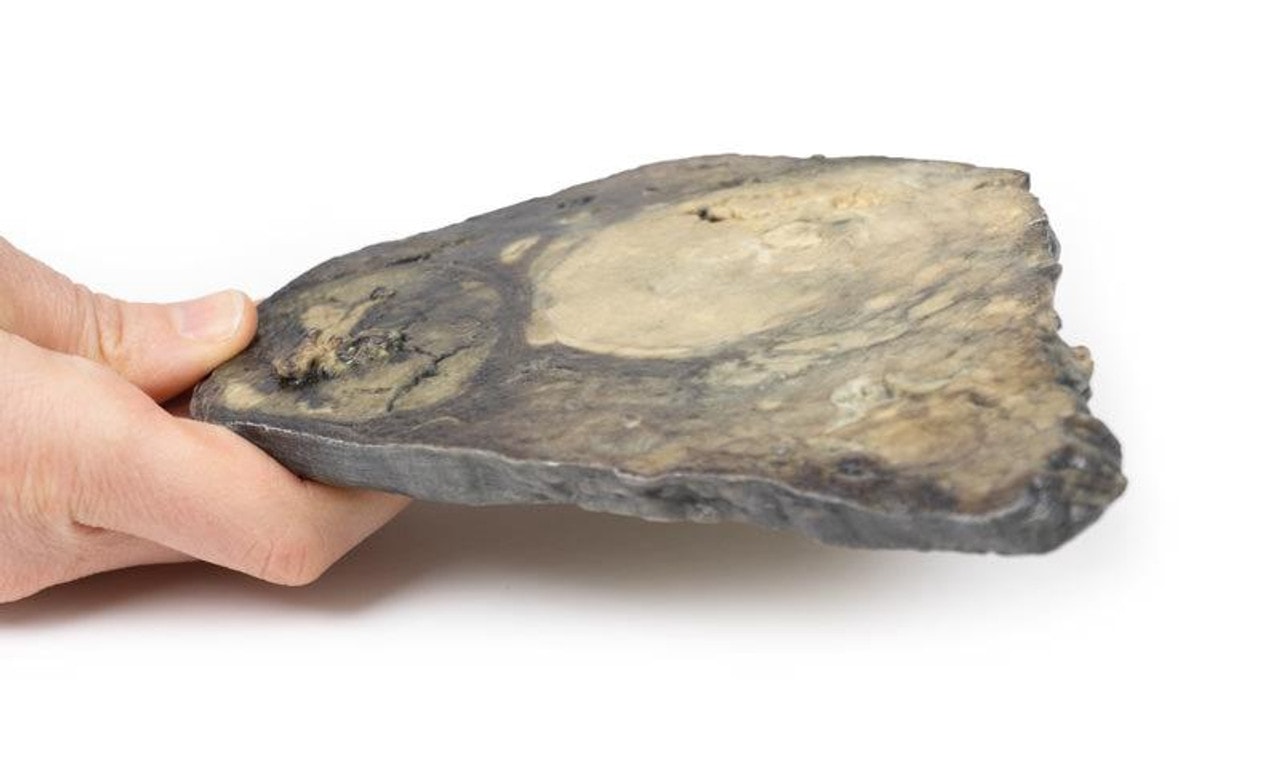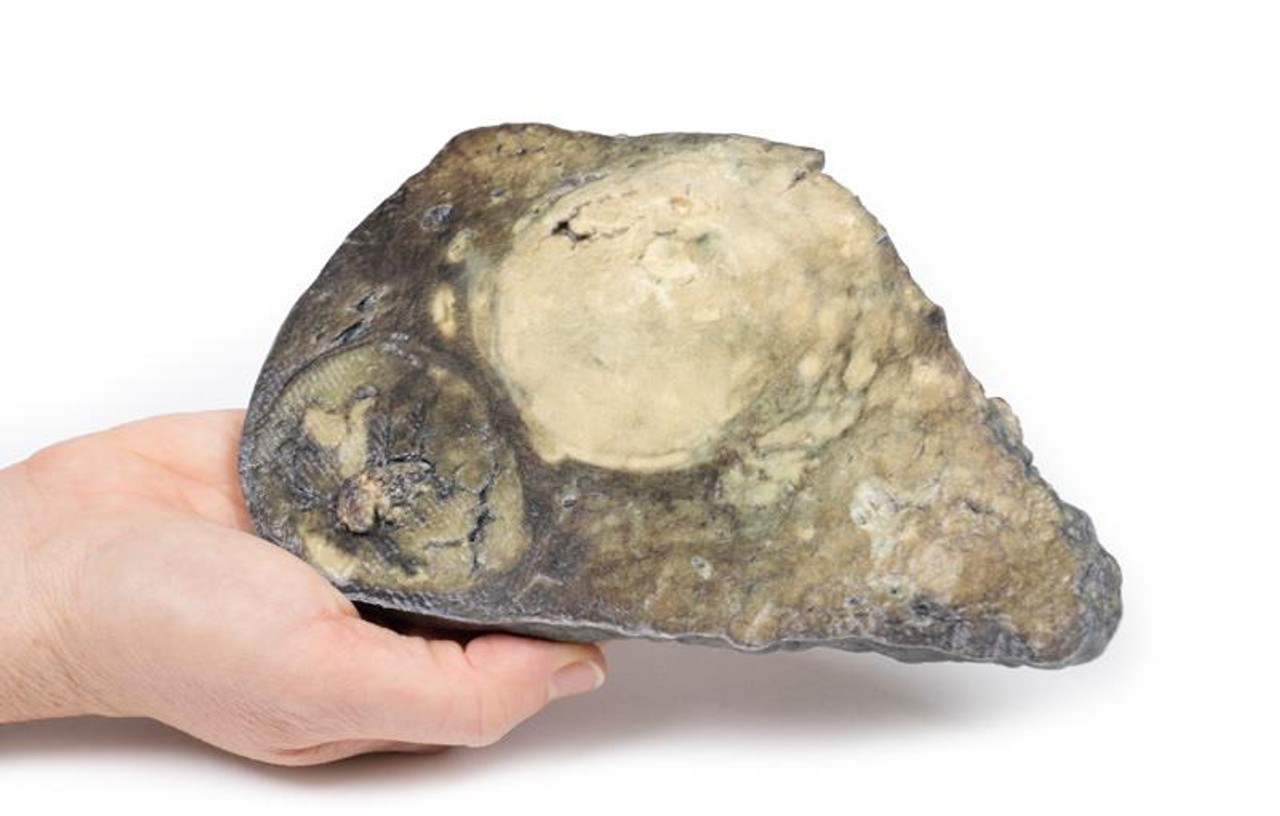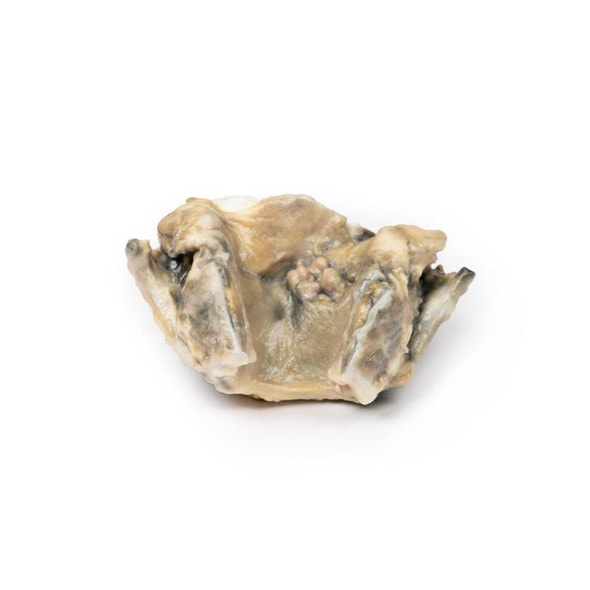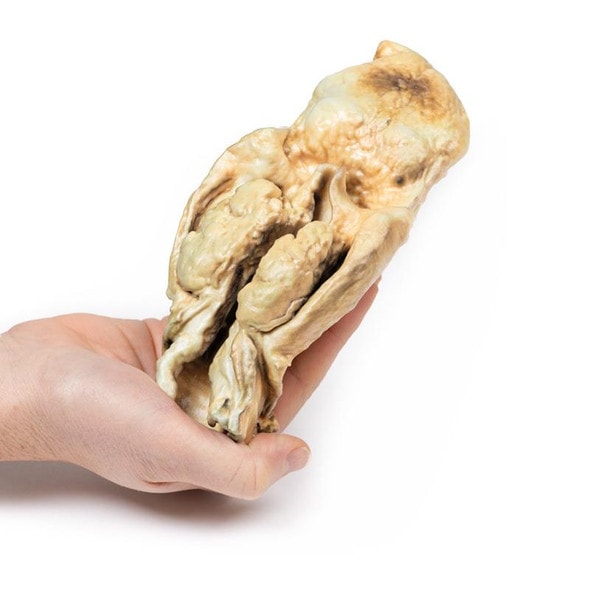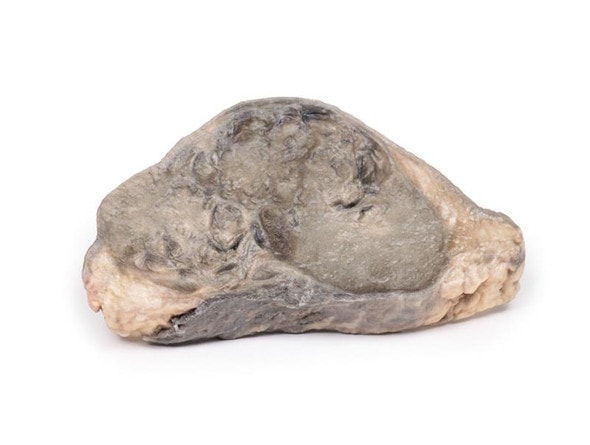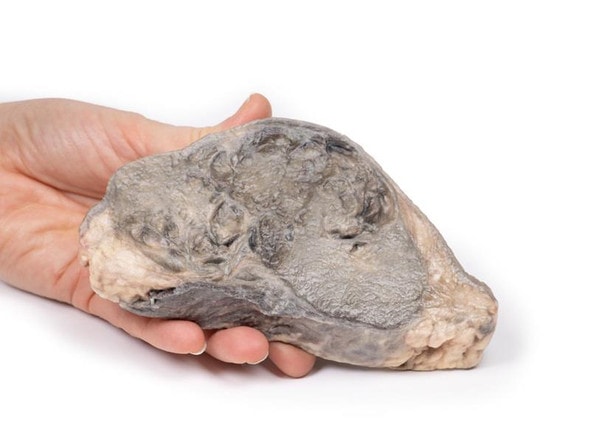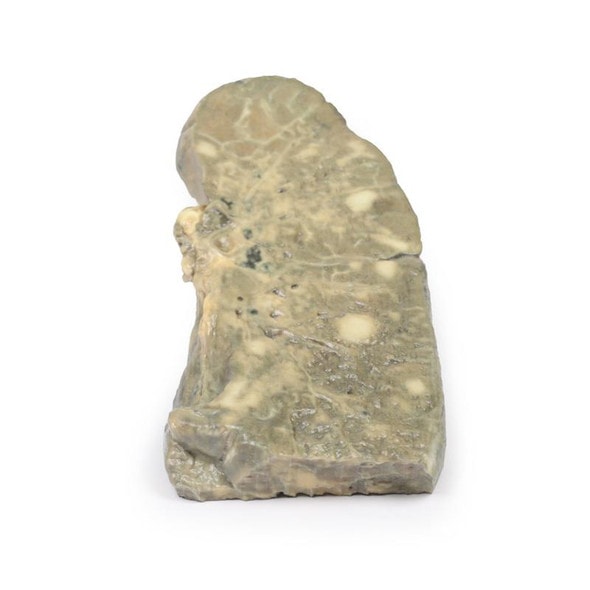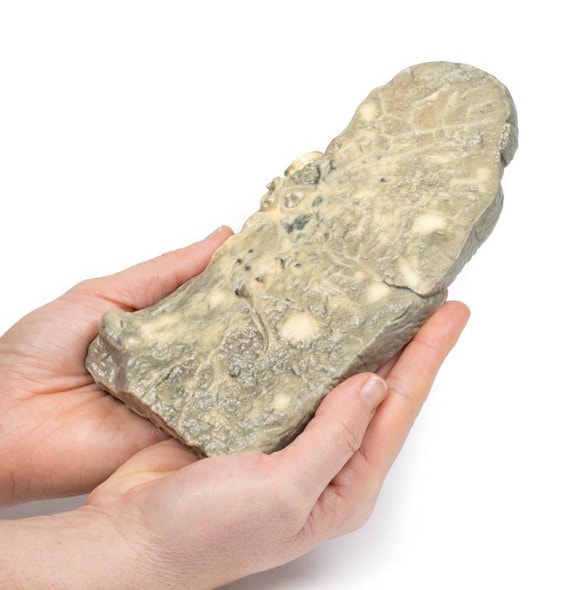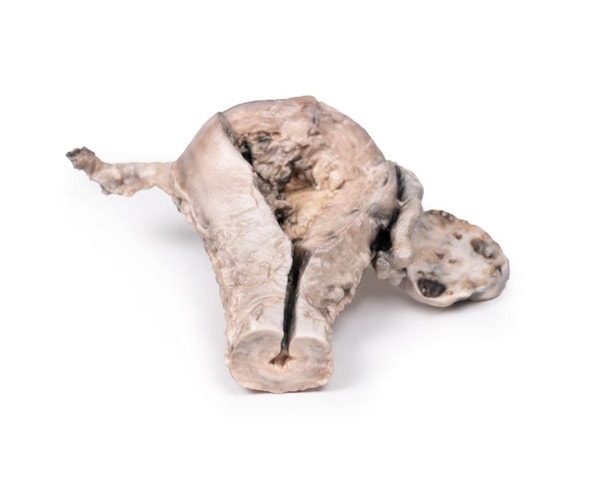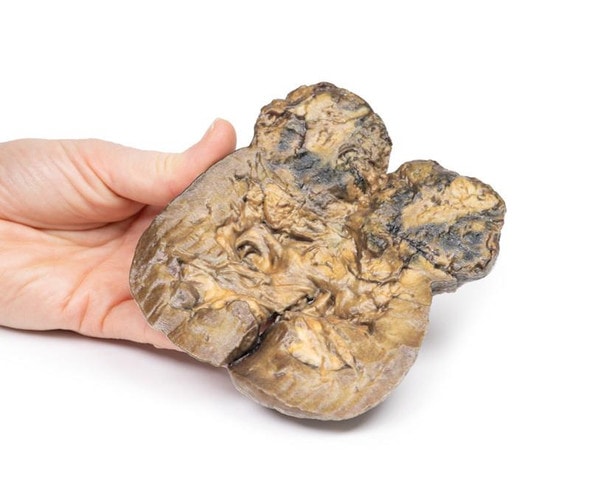Description
Developed from real patient case study specimens, the 3D printed anatomy model pathology series introduces an unmatched level of realism in human anatomy models. Each 3D printed anatomy model is a high-fidelity replica of a human cadaveric specimen, focusing on the key morbidity presentations that led to the deceasement of the patient. With advances in 3D printing materials and techniques, these stories can come to life in an ethical, consistently reproduceable, and easy to handle format. Ideal for the most advanced anatomical and pathological study, and backed by authentic case study details, students, instructors, and experts alike will discover a new level of anatomical study with the 3D printed anatomy model pathology series.
Clinical History
A 60-year old male is admitted with jaundice, melena and abdominal distension. He has a past medical history of untreated Hepatitis C infection from previous intravenous drug use. Further questioning reveals a 9-month history of significant fatigue, weight loss, nausea and intermittent dull right upper quadrant pain. Liver ultrasound demonstrated two large lesions within the liver. Soon after admission the patient dies from a suspected oesophageal variceal hemorrhage.
Pathology
This is the liver specimen of the patient on postmortem examination. The cut surface of the liver has a multinodular appearance consistent with macronodular cirrhosis. These multiple nodules are of varying size up to 2cm in diameter, and are separated by narrow bands of fibrous tissue. There are two large round tumors also visible. These are 8cm and 6cm in diameter with a variegated cut surface due to focal necrosis, hemorrhage and bile staining. This is an example of hepatocellular carcinoma that has developed on the background of a cirrhotic liver.
Further Information
Hepatocellular carcinoma is the most common primary malignant liver cancer. HCC arises from hepatocytes in the liver. Risk factors for developing HCC include viral infections (Hepatitis B and Hepatitis C), liver cirrhosis, aflatoxin exposure, Non Alcoholic Fatty Liver Disease (NAFLD), haemochromatosis and Wilson's Disease. The latter is an inherited disorder in which excessive amounts of copper accumulate in the body, particularly in the liver, brain, and eyes. HCC incidence is highest in Asia and sub Saharan Africa. There is a higher risk of developing HCC in males. HCC is associated with acquired driver mutation in oncogenes and tumor suppressor genes. The two most common driver mutations that can lead to HCC are gain-of-function mutations in beta-catenin and loss-of-function mutations in p53.
Clinically HCC can present with abdominal pain, fatigue, weight loss, abdominal fullness and less commonly jaundice, gastrointestinal or variceal bleeding. HCC metastatic spread is hematogenous with lung, abdominal lymph nodes and bones being the most common extrahepatic sites. Death usually occurs from cachexia, hemorrhage or liver failure. Treatment varies on the stage of the tumor and the patient's underlying general status and co-morbidities. Treatment can include surgical resection of ablation of the tumor, chemotherapy and liver transplantation can be curative.
Advantages of 3D Printed Anatomical Models
- 3D printed anatomical models are the most anatomically accurate examples of human anatomy because they are based on real human specimens.
- Avoid the ethical complications and complex handling, storage, and documentation requirements with 3D printed models when compared to human cadaveric specimens.
- 3D printed anatomy models are far less expensive than real human cadaveric specimens.
- Reproducibility and consistency allow for standardization of education and faster availability of models when you need them.
- Customization options are available for specific applications or educational needs. Enlargement, highlighting of specific anatomical structures, cutaway views, and more are just some of the customizations available.
Disadvantages of Human Cadavers
- Access to cadavers can be problematic and ethical complications are hard to avoid. Many countries cannot access cadavers for cultural and religious reasons.
- Human cadavers are costly to procure and require expensive storage facilities and dedicated staff to maintain them. Maintenance of the facility alone is costly.
- The cost to develop a cadaver lab or plastination technique is extremely high. Those funds could purchase hundreds of easy to handle, realistic 3D printed anatomical replicas.
- Wet specimens cannot be used in uncertified labs. Certification is expensive and time-consuming.
- Exposure to preservation fluids and chemicals is known to cause long-term health problems for lab workers and students. 3D printed anatomical replicas are safe to handle without any special equipment.
- Lack of reuse and reproducibility. If a dissection mistake is made, a new specimen has to be used and students have to start all over again.
Disadvantages of Plastinated Specimens
- Like real human cadaveric specimens, plastinated models are extremely expensive.
- Plastinated specimens still require real human samples and pose the same ethical issues as real human cadavers.
- The plastination process is extensive and takes months or longer to complete. 3D printed human anatomical models are available in a fraction of the time.
- Plastinated models, like human cadavers, are one of a kind and can only showcase one presentation of human anatomy.
Advanced 3D Printing Techniques for Superior Results
- Vibrant color offering with 10 million colors
- UV-curable inkjet printing
- High quality 3D printing that can create products that are delicate, extremely precise, and incredibly realistic
- To improve durability of fragile, thin, and delicate arteries, veins or vessels, a clear support material is printed in key areas. This makes the models robust so they can be handled by students easily.

